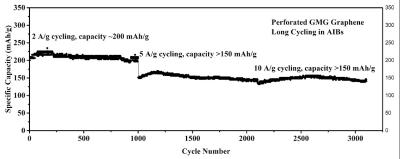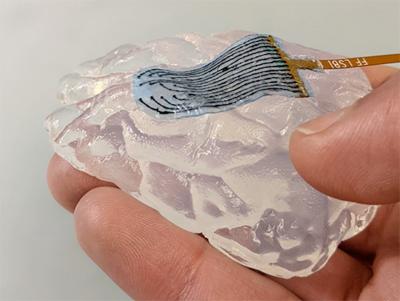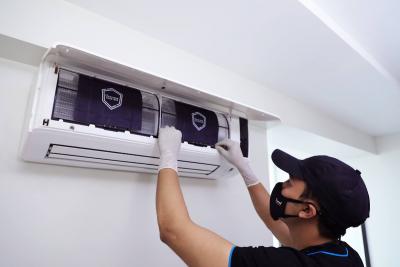The Graphene-Info weekly newsletter
Published: Tue, 06/29/21
New ICE-Batt project sets out to optimize battery technology using graphene and CNTs
CPI and Thomas Swan have teamed up with Johnson Matthey (JM), a company focused on sustainable technologies, to explore how to best optimize battery technology using graphene and CNTs.
The ICE-Batt project receives funding support from the Faraday Battery Challenge, managed by Innovate UK – the UK’s innovation agency – to enable the investigation of how innovative carbon nanotubes (CNTs) and graphene nanoplatelets (GNPs) can improve battery performance. In addition, the project will explore how to improve the green credentials of battery processing.
GMG shares further updates on aluminum-ion coin cell batteries performance
Australia-based Graphene Manufacturing Group (GMG) recently shared initial performance data from tests performed on coin cells for the patent-pending surface perforation of graphene in aluminium-ion batteries developed by the Company and the University of Queensland (“UQ”). Now, GMG revealed further performance data of these graphene aluminium-ion coin cell batteries.
 Source: University of Queensland, GMG website
Source: University of Queensland, GMG website
The experiments were performed at the Australian Institute for Bioengineering and Nanotechnology (“AIBN”) at UQ. Testing reportedly confirmed a very high cycle rate for graphene aluminium-ion coin cell batteries together with minimal reduction in performance over a 3,000 cycle experiment period (which includes charging up to full charge and discharge down to near full discharge) at very high charging rates – including at 2 Ampere per gram (“A/g”) of cathode material for 1000 cycles, 5 A/g of cathode material for 1000 cycles and then 10 A/g of cathode material for a further 1000 cycles.
First Graphene updates on commercial use of PureGRAPH
First Graphene (FGR) has provided an update on the progress of the commercial use of its pureGRAPH product line and the product launches from early adopters of its PureGRAPH products.
FGR shared that Aquatic Leisure Technologies (ALT) has used a PureGRAPH enhanced laminate system to develop a new range of swimming pools launched under Aqua Technics. The new graphene nano-tech pool range is said to provide multiple quality improvements with ALT upgrading equipment and processes to implement commercial-scale production. This means PureGraph will be standard in all new Aqua Technics pools.
New strategy uses graphene quantum dots to boost catalysts
Rice University researchers, in collaboration with teams at Oak Ridge National Laboratory, University of Saskatchewan, King Abdullah University of Science and Technology and CAS, have used graphene quantum dots (GQDs) to assemble what they say may transform chemical catalysis by greatly increasing the number of transition-metal single atoms that can be placed into a carbon carrier.
 The process uses functionalized graphene quantum dots to trap transition metals for higher metal loading single-atom catalysis. Illustration courtesy of the Wang Group (from Rice Uni website)
The process uses functionalized graphene quantum dots to trap transition metals for higher metal loading single-atom catalysis. Illustration courtesy of the Wang Group (from Rice Uni website)
The technique uses graphene quantum dots, 3-5-nanometer particles of graphene, as anchoring supports. These facilitate high-density transition-metal single atoms with enough space between the atoms to avoid clumping.
Graphene and CNTs assist in creating viscoelastic electrode arrays
A team of scientists from Harvard’s Wyss Institute and John A. Paulson School of Engineering and Applied Sciences (SEAS) has created flexible, metal-free electrode arrays that conform to the body. This conformity allows, for example, electrical impulses to be recorded and stimulated with lower required voltages, enabling their use in hard-to-reach areas of the body, and minimizes the risk of damage to delicate organs.

Arrays of metal electrodes are currently used in medical procedures that require monitoring or delivering electrical impulses in the body, such as brain surgery and epilepsy mapping. However, the metal and plastic materials that comprise them are stiff and inflexible while the body’s tissues are soft and malleable. This mismatch limits the places in which electrode arrays can be successfully used, and also requires the application of a large amount of electrical current in order to “jump” the gap between an electrode and its target. In this new work, the team tackles this issue and delivers soft and conformable graphene and CNTs based electrodes.
GMG joins Future Battery Industry Cooperative Research Centre
Graphene Manufacturing Group (GMG) has announced that it will join the Future Battery Industries Cooperative Research Centre (“CRC“) for battery electrolytes development along with various organizations and universities.
The CRC’s objective is to develop advanced electrolyte systems that improve battery performance. The project will run over a period of 4 years with GMG providing a source of graphene and personnel time to the project.
Nanomatrix Materials launches graphene-based AC filters for protection against airborne virus, bacteria and other harmful materials
India-based startup Nanomatrix Materials has introduced a new product range of G1 AC Filters for air conditioners, that uses graphene-silver nanotechnology to purify in-room air and sterilize 99% of airborne microbes. The system also, according to the Company, filtrates dust particles and reduces harmful VOC/gases. The product is meant to convert conventional air conditioners into air purifiers.

This new technology, the Company shares, can be used in any existing centralized HVAC system, AHUs or FCUs for crowded place like airports, malls, schools, hospitals where there is higher risk of contamination.




